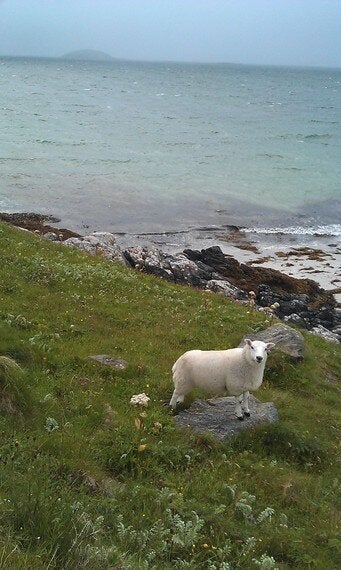
I was once asked if I worried about my arsenic intake due to the amount of seaweed that my family and I eat. It was one of those supermarket aisle conversations and not instigated by an Islander. Nevertheless it stopped me in my tracks. My son later said: why didn't you tell her that we've been eating the stuff for years. What I should have cited was seaweed eating sheep. On North Ronaldsay, the most northern Island of the Orkney Archipelago, the sheep graze on seaweed for most months of the year. During lambing the ewes feed on grass. They dine on brown seaweed, mostly the wracks and kelps: oar weed, forest kelp and furbellows - the Laminaria spp. At low tide the sheep can pick their own, otherwise they eat storm cast seaweed. Studies on the arsenic concentration in the tissue and wool of North Ronaldsay sheep is considerably higher than for non exposed sheep, but does not reach the maximum allowed arsenic levels in UK foodstuffs guidelines. In fact there are no reports of arsenic poisoning from seaweed.
On South Uist the sheep often wander down to the beach, and so cooking rack of lamb with a seaweed crust isn't rocket science. Dulse works particularly well with the addition of wild mountain thyme or the invasive Rosa rugosa petal. Dulse and rose is a wonderful fusion of Hebridean and Middle Eastern flavour. I am a great believer of cooking with wild plants or sea vegetables that grow in close proximity to where animals and shellfish graze. Venison works well with blaeberries, juniper berries, brambles, and wild thyme. Rather along the lines of 'if it grows together, it goes together'. In the Western Isles deer wander down to the beach and eat seaweed, so I often add sugar kelp to venison casserole. As for leftover carrageen gel (ubiquitously used to make blancmange style Irish Moss pudding), I add it to thicken and give shine to stews and soups.
The merits of seaweed have no end and my Outer Hebridean seaweed leaven is now thriving in kitchens, in the sunny South of England. Research at Hallam, Sheffield University suggests that seaweed added to wholemeal bread aids the shelf life of the bread. Alas my seaweed sourdough doesn't hang around long enough to put this evidence based research to the test. My seaweed book will be part of Prospect Books' The English Kitchen series, which in the year of a Scottish independence referendum is pointed. Meanwhile Scotland boasts a resurgence in the kelp and wrack industry, and in Wales, The Pembrokeshire Beach Food Company was awarded a BBC and Farming award. Seaweed also has a West Country history and revival too and in the Channel Isles, vraic is back on the menu. Seaweed is freely available through out the British Isles.